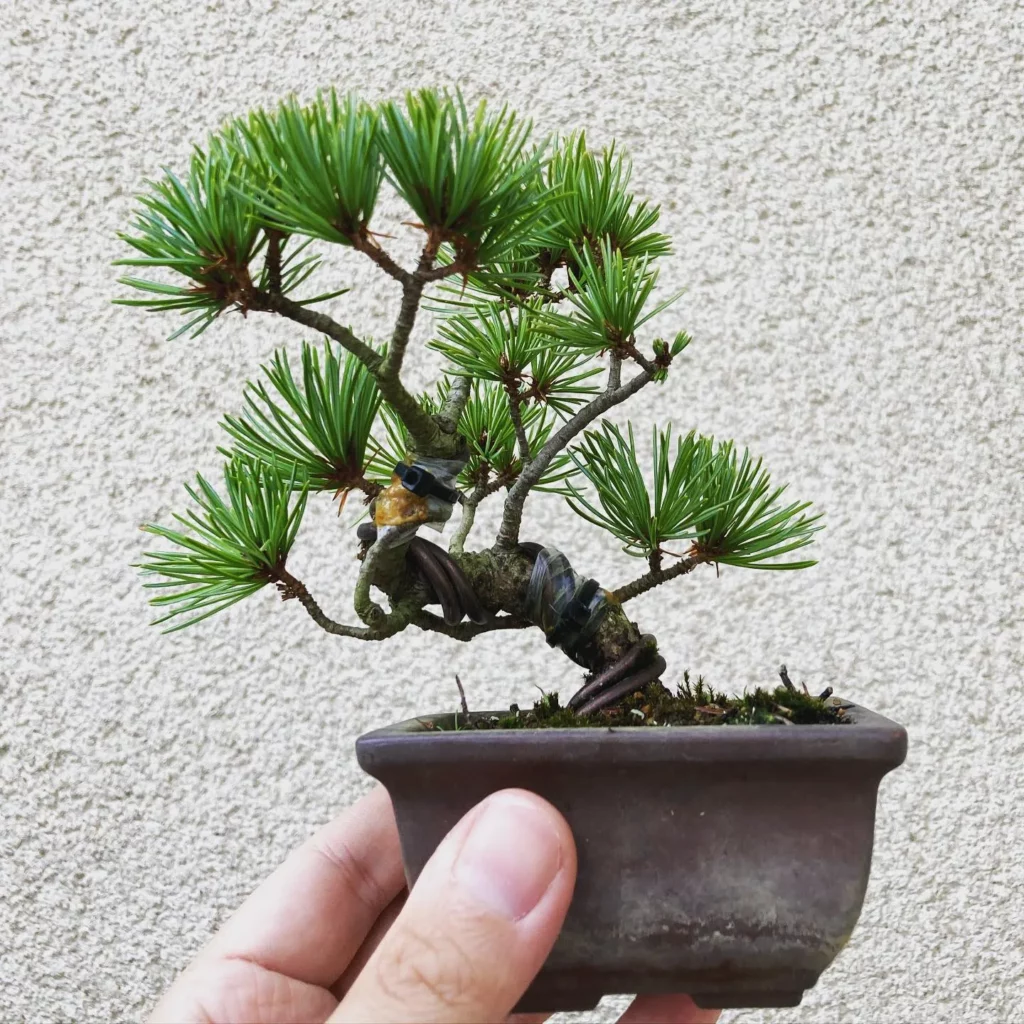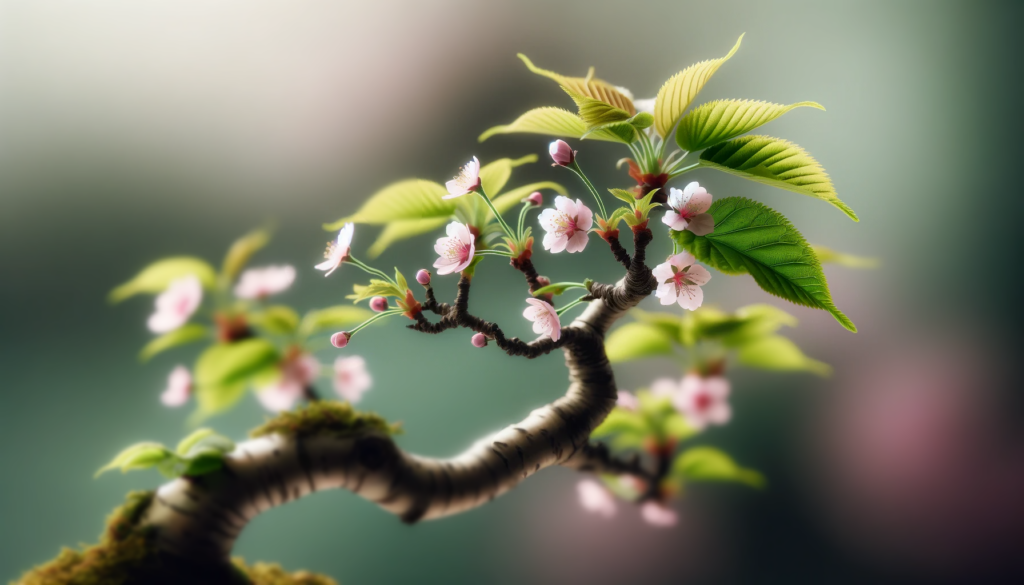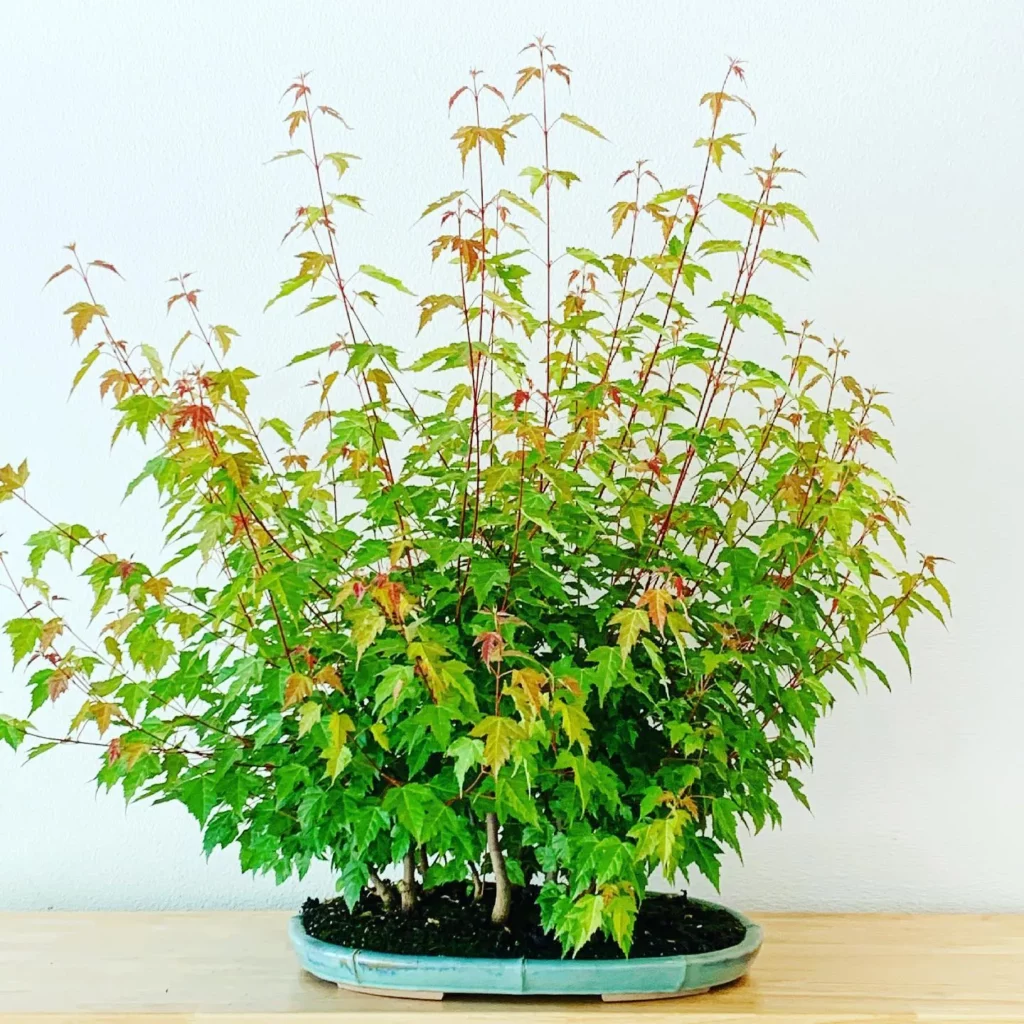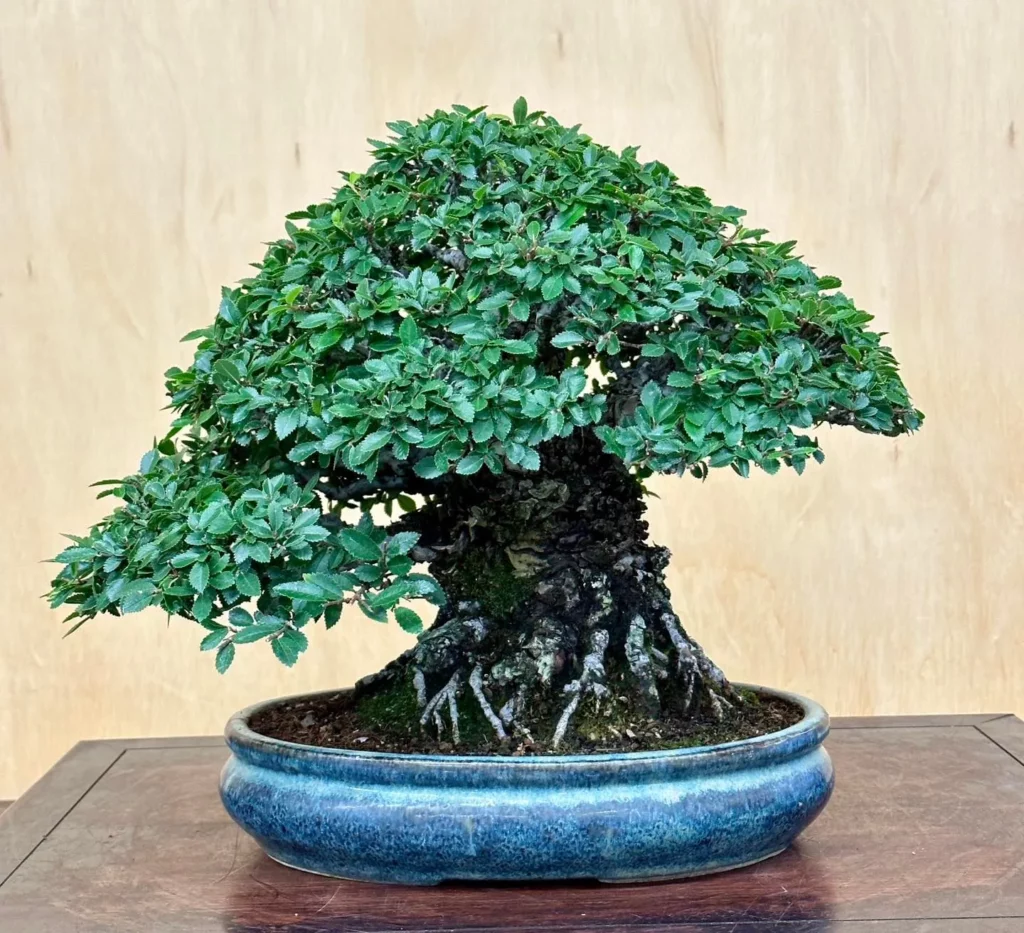Bonsai enthusiasts are always on the lookout for unique and rare varieties to add an exotic touch to their collections. In this article, we will explore some unusual bonsai options, including Ficus, Stewartia, Serissa, Silverberry, Azaleas, Mickey Mouse Bush, Japanese Snowbell, Rosemary, Corokia Cotoneaster, Bald Cypress, Pieres Japonica, and even unconventional choices like Cannabis and Butterfly Bush.
Unconventional Choices: Cannabis Bonsai

Looking for a unique and unconventional addition to your bonsai collection? Consider the Cannabis plant. While often associated with its medicinal uses, the Cannabis plant actually possesses characteristics that make it suitable for bonsai cultivation. Its leaves and trunk resemble those of the popular trident maple species used in bonsai art.
One of the standout features of Cannabis bonsai is its dense foliage, which can quickly develop into a remarkable canopy. Within a relatively short amount of time, you can witness the transformation of your Cannabis bonsai into a captivating work of art.
However, it is essential to note that the cultivation and use of cannabis may be subject to legal restrictions in some areas. Before embarking on your Cannabis bonsai journey, make sure to familiarize yourself with the regulations and laws governing its cultivation.
Unique Blooms: Butterfly Bush Bonsai

The Butterfly Bush is an interesting choice for bonsai enthusiasts, especially those living in the northeastern United States. This fast-growing plant is known for its ability to attract butterflies and bumblebees with its beautiful blooms.
When cultivated as a bonsai, the Butterfly Bush can provide a unique touch to your collection. Its bark can develop an aged appearance within a few years, adding character and charm to the bonsai design.
But what truly sets the Butterfly Bush bonsai apart is its ability to bloom, creating a captivating spectacle. The vibrant flowers of the Butterfly Bush come in a variety of colors, ranging from purple and pink to white and yellow. These blooms not only add a pop of color to your bonsai display but also attract pollinators, making it a vibrant addition to any garden.
Air Layering: Shaping Your Butterfly Bush Bonsai
One technique that can be used to propagate and shape the Butterfly Bush bonsai is air layering. This method involves creating new roots while the branch is still attached to the parent plant.
To air layer your Butterfly Bush bonsai, select a lower branch that will become the new trunk of the bonsai. Strip off a small section of bark and apply a layer of rooting hormone to encourage root development. Wrap the wounded area with sphagnum moss, covering it with plastic wrap to maintain moisture.
Over time, new roots will form at the wounded area. Once the roots are well-established, you can cut the branch below the air layer and transplant your new Butterfly Bush bonsai into a suitable bonsai pot. This technique allows you to shape and design your bonsai according to your vision and create a truly unique and eye-catching specimen.
Keeping Leaves Small: Adding Fine Detailing to Your Butterfly Bush Bonsai
An interesting characteristic of the Butterfly Bush is its ability to produce small leaves in response to pruning and leaf pinching. This attribute makes it well-suited for bonsai cultivation, as small leaves allow for intricate and delicate detailing in the bonsai design.
To keep the leaves of your Butterfly Bush bonsai small, regular pruning and pinching are necessary. By removing excessive growth and pinching off new shoots, you can help encourage the plant to produce smaller and more refined leaves, enhancing the overall aesthetics of your bonsai.
With its beautiful blooms, air layering technique, and the potential for small leaves, the Butterfly Bush bonsai offers a unique and captivating option for bonsai enthusiasts. Adding one to your collection will not only bring beauty and vibrancy but also make your bonsai display stand out with its unique characteristics.
Unusual Fruiting: Apple Bonsai

While maintaining fruiting trees as bonsai can be challenging, the results can be truly remarkable. One of the most unique choices for fruiting bonsai is the Apple tree. Despite its larger size, with proper care and cultivation techniques, you can create an apple bonsai that will surely amaze. Just imagine the sight of a petite bonsai tree adorned with a full-grown apple. It’s a delightful touch of whimsy that will instantly grab attention and add a captivating element to your bonsai collection.
However, it’s important to note that growing fruiting bonsai trees requires specific knowledge and techniques to ensure successful fruit production. Here are some essential considerations for cultivating Apple bonsai:
- Choose the right variety: Select a bonsai-friendly Apple variety that is known for its ability to adapt to the constraints of bonsai cultivation. Consider varieties like ‘Columnar,’ ‘Dwarf Gala,’ or ‘Dwarf Granny Smith’.
- Optimize growing conditions: Apple trees thrive in full sun, so ensure your bonsai receives at least 6-8 hours of direct sunlight each day. Proper watering and regular fertilization are also vital for healthy growth.
- Prune and shape meticulously: Regular pruning is essential to maintain the desired shape and size of your bonsai. Trim excess foliage and branches to enhance airflow and promote the development of fruit-bearing branches.
- Implement proper pollination techniques: Apple trees require cross-pollination to produce fruit. If you have multiple Apple bonsai, ensure they bloom simultaneously and take measures to facilitate pollination, such as using a small paintbrush to transfer pollen between flowers.
- Protect from pests and diseases: Like any other plant, Apple bonsai can be susceptible to pests and diseases. Regularly inspect your bonsai for signs of infestation or disease and take appropriate measures to mitigate any issues.
Unique Form: Monkey Puzzle Tree Bonsai

The Monkey Puzzle Tree is a truly unique bonsai variety. Its appearance is striking, resembling a cactus with its spiky foliage and unusual branching pattern. This extraordinary tree adds a touch of drama and uniqueness to any bonsai collection, making it a standout feature.
The Monkey Puzzle Tree bonsai is known for its resilience and adaptability, making it suitable for bonsai cultivation. Whether you use it as the centerpiece of a specific theme or as a contrasting accent piece, this bonsai variety is sure to captivate attention and create a memorable display.
With its cactus-like appearance, the Monkey Puzzle Tree brings a distinctive element to your bonsai collection. Its spiky foliage creates an eye-catching texture, while its unconventional branching pattern adds visual interest. This bonsai variety is truly one-of-a-kind.
Why Choose the Monkey Puzzle Tree Bonsai?
- Unique Appearance: The spiky foliage and unusual branching pattern make the Monkey Puzzle Tree bonsai a standout in any collection.
- Resilience and Adaptability: This bonsai variety is known for its ability to thrive in different environments and conditions.
- Dramatic Focal Point: The Monkey Puzzle Tree bonsai adds a touch of drama and uniqueness to any bonsai display, making it a focal point of attention.
Unusual Options: Oaks as Bonsai
While oaks are not commonly considered as bonsai trees in many parts of the world, they can be successfully transformed into bonsai in California. In fact, California is home to some wonderful oak species that can be made into stunning bonsai specimens.
Oaks offer unique challenges and opportunities for bonsai artists. Their thick and old-looking trunks, combined with their small leaves, make them suitable for bonsai cultivation. When properly cared for, oak bonsai can develop elegant branch structures and intricate root systems, adding to their overall beauty.
To successfully cultivate oak bonsai, it’s important to consult specialized resources that provide detailed information on caring for this unique bonsai variety. These resources can guide you through the specific techniques and considerations necessary to optimize the health and growth of your oak bonsai.
Overall, oak bonsai present a captivating and unconventional choice for bonsai enthusiasts looking to explore unusual bonsai varieties. By embracing the challenges that come with cultivating oak bonsai, you can create breathtaking bonsai specimens that showcase the strength and grandeur of these magnificent trees.
Unconventional Artists: Bonsai as Art
Bonsai as an art form has captivated unconventional bonsai artists around the world, pushing the boundaries of traditional bonsai interpretations. These artists have taken bonsai to new heights by creating unique and extraordinary bonsai creations that showcase the true potential of bonsai as an art form.
Beyond Tradition: Pushing the Limits
Unconventional bonsai artists have approached bonsai cultivation with a fresh perspective, incorporating their own artistic interpretations and unconventional ideas. They have explored unconventional materials, themes, and techniques to create bonsai compositions that challenge the traditional notions of what bonsai should be.
Recreating Movie Landscapes
Inspired by popular movies and fictional landscapes, some unconventional bonsai artists have recreated iconic scenes within their bonsai compositions. For example, the Bag End Bonsai landscape, inspired by “The Lord of the Rings,” brings the whimsical world of hobbits and Middle-earth into the realm of bonsai, capturing the imagination of viewers.
Miniature Cityscapes
Taking inspiration from urban environments, some bonsai artists have incorporated miniature cityscapes into their compositions. These unique bonsai creations feature tiny buildings, roads, and even miniature bonsai tree-houses, such as the creations by Takanori Aiba. These enchanting bonsai compositions blur the line between nature and human-built environments, infusing bonsai with a touch of whimsy and imagination.
Unlocking Creative Potential
These unconventional bonsai creations serve as a testament to the versatility and creative potential of bonsai as an art form. They inspire bonsai enthusiasts to think outside the box and explore new horizons in their own bonsai creations. By embracing unconventional ideas and pushing the boundaries of what is traditionally considered bonsai, artists can cultivate unique and captivating bonsai specimens that reflect their personal style and artistic vision.
Unconventional bonsai artists continuously redefine the art form, breathing new life into the world of bonsai and captivating audiences with their unique bonsai creations. Their artistic interpretations demonstrate that bonsai is more than just a horticultural practice—it is a form of artistic expression that knows no bounds.
Unique Techniques: Bonsai Trunk Fusion
Bonsai artists are constantly exploring innovative techniques to create unique and visually stunning bonsai specimens. One such technique is trunk fusion, a specialized grafting technique that can result in extraordinary bonsai specimens with remarkable aesthetic appeal.
Trunk fusion involves using multiple rooted cuttings to create a large base trunk with a dramatic taper. By carefully joining the trunks of separate trees together, bonsai enthusiasts can achieve a mature appearance in a relatively short amount of time.
This technique requires knowledge and experience, as the grafting process must be done with precision and care. The artist must select compatible tree species and ensure proper alignment and protection of the grafts.
Trunk fusion offers several advantages for bonsai cultivation. It allows for the creation of more substantial and robust trunks, adding a sense of age and character to the bonsai. Additionally, it provides opportunities to incorporate unique trunk formations and natural-looking taper.
If executed skillfully, bonsai trunk fusion can result in striking and one-of-a-kind bonsai specimens that showcase the artistry and craftsmanship of the bonsai artist.
Unleash Your Creativity: Exploring Unusual Bonsai Options
The world of bonsai offers endless possibilities for creativity and self-expression. While traditional choices like junipers, maples, and pines are popular among bonsai enthusiasts, there is a whole realm of unusual bonsai options waiting to be explored. From unconventional choices like Cannabis and Butterfly Bush to unique bloomers like Pieres Japonica and the intriguing Monkey Puzzle Tree, the world of exotic and rare bonsai varieties is ripe with opportunities to unleash your creativity.
With these unusual bonsai options, you have the chance to cultivate truly unique specimens that will set your collection apart. Imagine the delicate beauty of a flowering Butterfly Bush bonsai or the dramatic presence of a Monkey Puzzle Tree bonsai with its spiky foliage. The unconventional choices like Cannabis and Pieres Japonica can add an unexpected twist to your display.
Don’t be afraid to try something different and bold. Remember, bonsai is not limited to specific species or conventional aesthetics. It’s about the artistry, imagination, and the personal connection you have with your trees. By thinking outside the box and experimenting with unusual bonsai options, you can create bonsai specimens that reflect your individual style and showcase your unique vision.
After this check out our other articles on:
FAQ
What are some unusual bonsai options?
Some unusual bonsai options include Ficus, Stewartia, Serissa, Silverberry, Azaleas, Mickey Mouse Bush, Japanese Snowbell, Rosemary, Corokia Cotoneaster, Bald Cypress, Pieres Japonica, Cannabis, Butterfly Bush, and Monkey Puzzle Tree.
Can Cannabis be used for bonsai cultivation?
Yes, the Cannabis plant can be cultivated as bonsai. Its leaves and trunk resemble a trident maple, a popular bonsai species, and it can develop a remarkable canopy in a short amount of time. However, the cultivation and use of cannabis may be subject to legal restrictions in some areas.
What makes the Butterfly Bush a good choice for bonsai?
The Butterfly Bush is a fast-growing plant that attracts butterflies and bumblebees with its beautiful blooms. It develops an aged appearance within a few years, making it suitable for bonsai cultivation. The leaves can be kept small, allowing for fine detailing in the bonsai design. Air layering can be used to propagate and shape the tree, resulting in a unique bonsai specimen.
Can fruiting trees be turned into bonsai?
Yes, fruiting trees can be transformed into bonsai. One unusual choice for fruiting bonsai is the Apple tree. With proper care and cultivation techniques, an apple bonsai can be created, featuring a petite tree with a full-grown apple.
What makes the Monkey Puzzle Tree a unique bonsai variety?
The Monkey Puzzle Tree has a striking appearance, resembling a cactus with its spiky foliage and unusual branching pattern. It can provide a distinct focal point in a bonsai collection, adding a touch of drama and uniqueness. This tree is known for its resilience and adaptability, making it suitable for bonsai cultivation.
Are oaks commonly used for bonsai?
While oaks are not commonly considered bonsai trees in many parts of the world, they can be successfully transformed into bonsai in California. California is home to wonderful oak species that can be made into stunning bonsai specimens. Their thick trunks and small leaves make them suitable for bonsai cultivation, but they require specific techniques and considerations.
How can bonsai be used as an art form?
Bonsai artists often push the boundaries of traditional bonsai by creating unconventional interpretations. For example, they recreate landscapes from movies or incorporate miniature cityscapes into bonsai compositions. These unique and artistic interpretations showcase the versatility and creative potential of bonsai as an art form.
What is bonsai trunk fusion?
Bonsai trunk fusion is a technique that involves using multiple rooted cuttings to create a large base trunk with a dramatic taper. This technique can achieve a mature appearance in a relatively short amount of time. Trunk fusion requires specialized grafting techniques and experience, but it can result in extraordinary bonsai specimens with remarkable aesthetic appeal.
How can I explore unusual bonsai options and unleash my creativity?
To explore unusual bonsai options and unleash your creativity, consider researching and experimenting with unique bonsai varieties. Cultivate bonsai specimens such as Cannabis, Butterfly Bush, Apple tree, Monkey Puzzle Tree, and others. Dedication and passion will help you develop truly unique bonsai specimens that reflect your personal taste and style.




